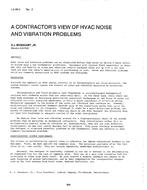Historically, the rising cost of energy has been an important driver for data center energy efficiency, and the contribution of this consumption to climatechange is ever more evident. As the industry begins to look beyond energy consumption, it has become aware that environmental impact derives not justfrom energy consumption, but also from our use of natural resources. To ensure optimization measures do not cause a burden shift, these interdependentissues should not be considered in isolation.
Data centers consume energy to power and cool IT equipment. Current optimization efforts largely focus on the operation of cooling technologies. These canbe categorized simplistically according to their use of air or water to remove the heat created by the IT equipment. Design decisions are based on thetheoretical energy consumption, and resulting running costs that a certain technology has in a given location. However, water is a valuable natural resourceand currently it is difficult to expand this analysis to consider its consumption alongside that of energy. It is also difficult to understand whether indirectimpacts of water and energy consumption outweigh any savings of one technology over another during operation. For example, water is consumed duringthe production of energy, the amount of which depends on the source of generation.
To understand these impacts a life cycle approach is required. Such an approach acknowledges that water and energy are consumed from the moment rawmaterials are extracted and combined into process materials, to the point that they are used and then disposed of. A full life cycle impact of the differentcooling technologies in a data center would consider the impacts of both the operational and embodied phases. This is, however, a time-consuming process.Instead, the industry needs life cycle based tools and metrics that can expedite this decision process. Using life cycle assessment (LCA) to determine asingle numerical value for total environmental impact, the work in this paper provides simple equations that allow designers to understand theenvironmental implications of their water and energy use in different parts of the world. A number of theoretical case studies are then used to demonstrateits application. Future work should look to include embodied impacts.
Citation: 2017 Winter Conference, Las Vegas, NV, Conference Papers
Product Details
- Published:
- 2017
- Number of Pages:
- 8
- Units of Measure:
- Dual
- File Size:
- 1 file , 850 KB
- Product Code(s):
- D-LV-17-C004


